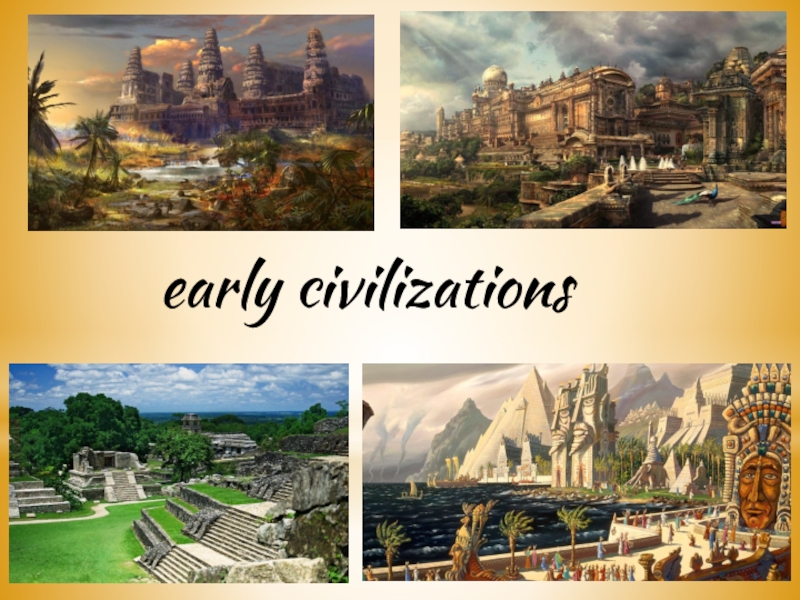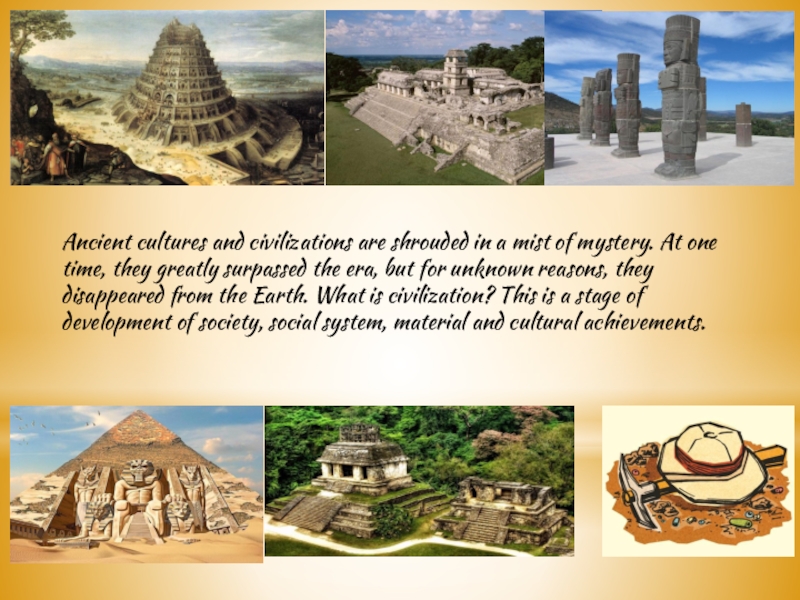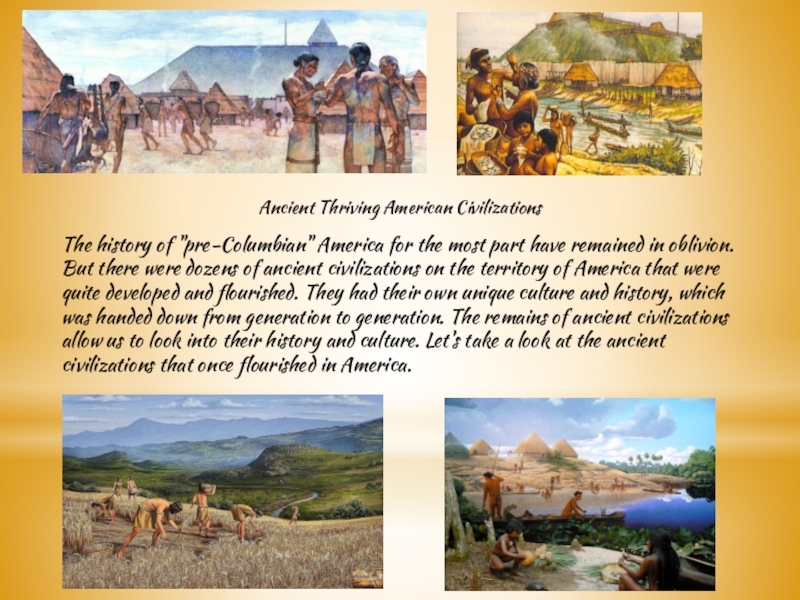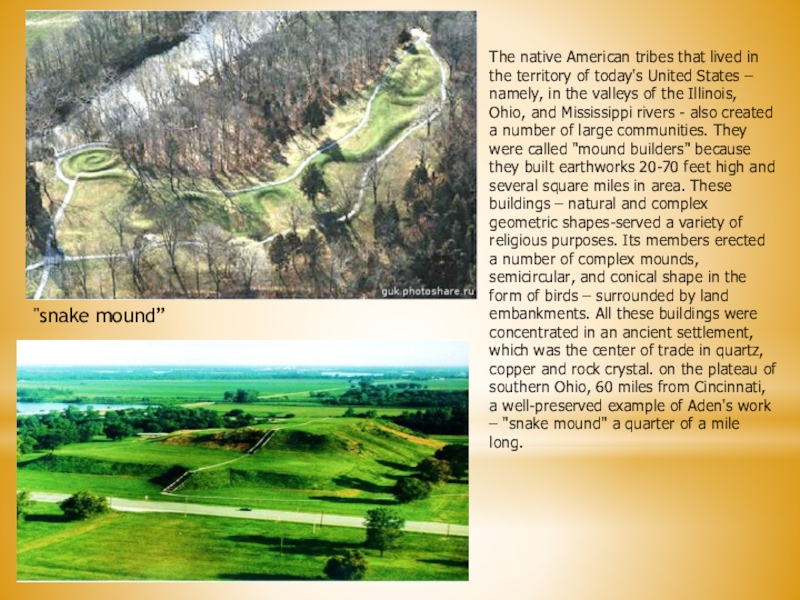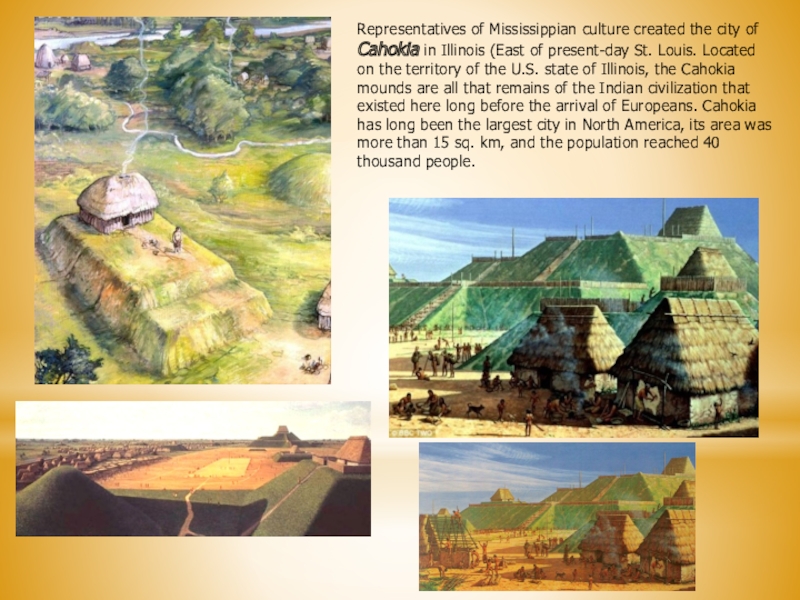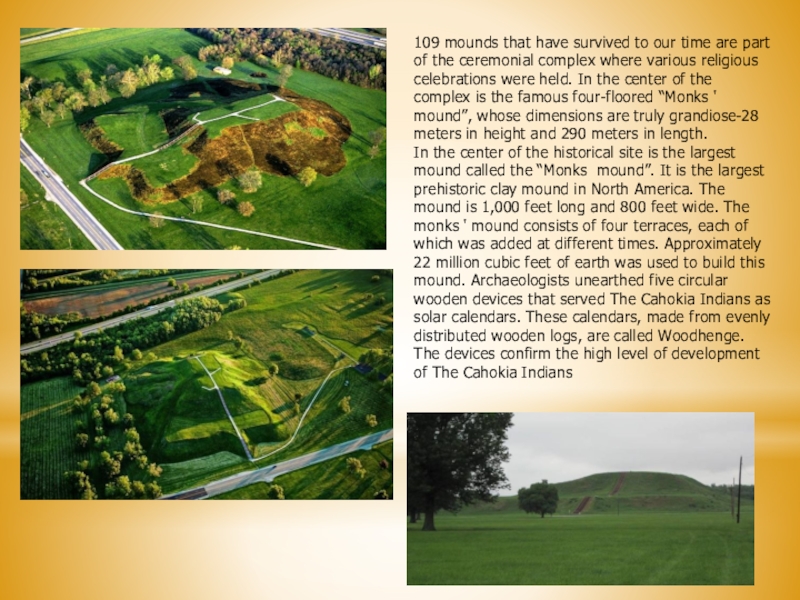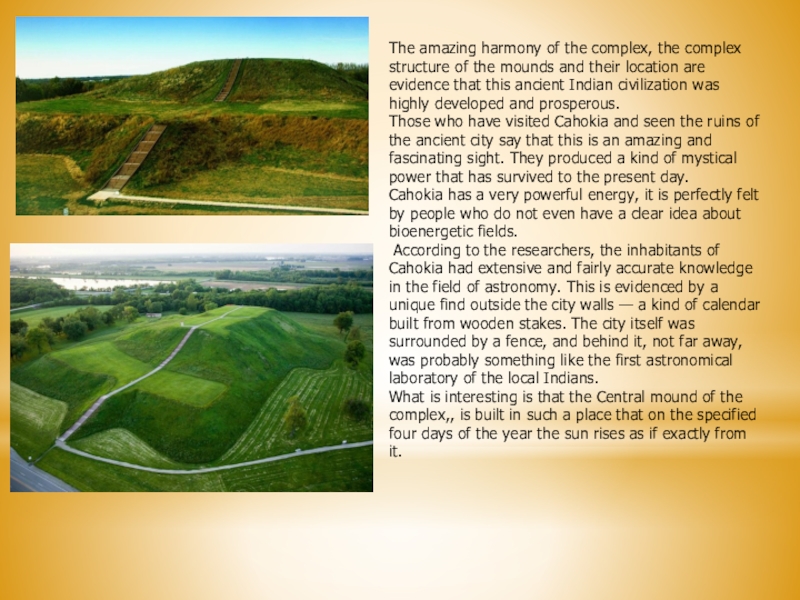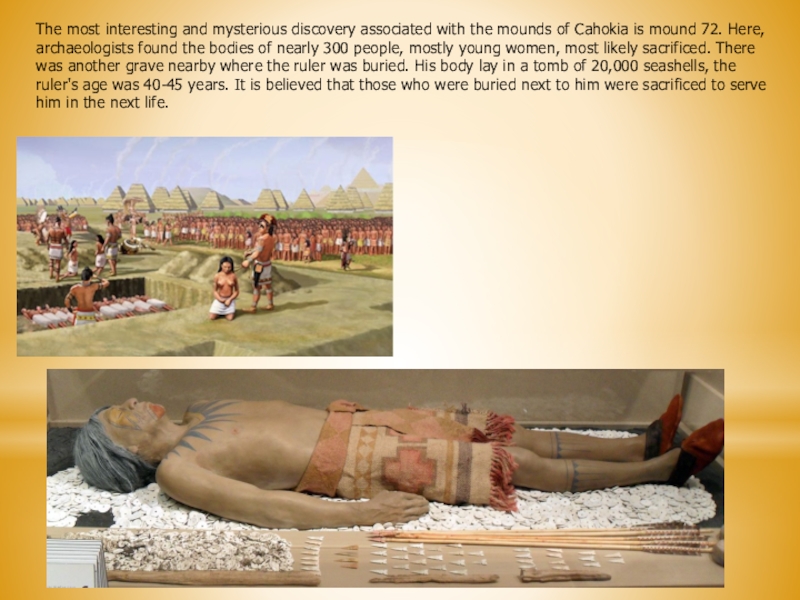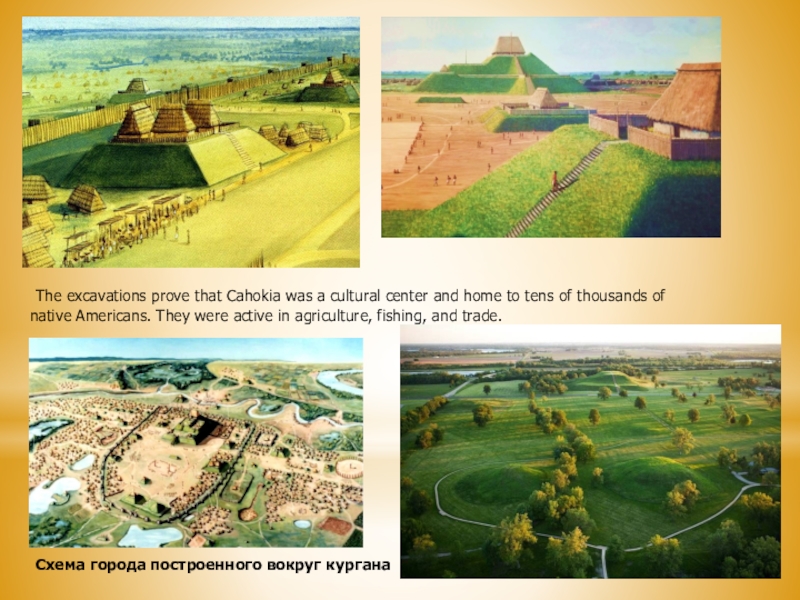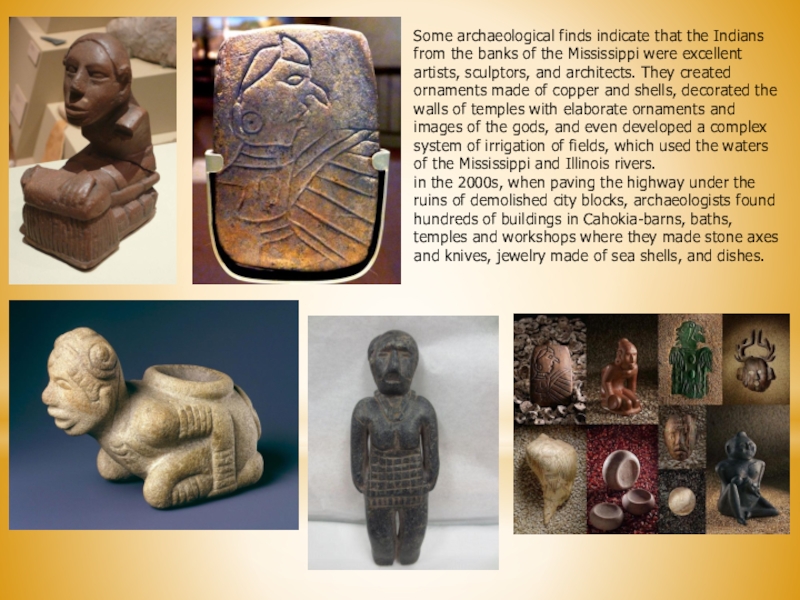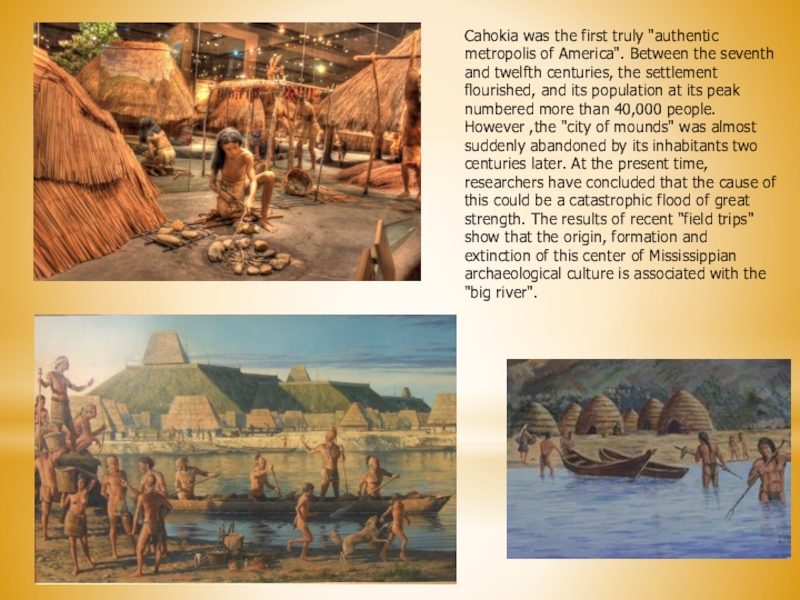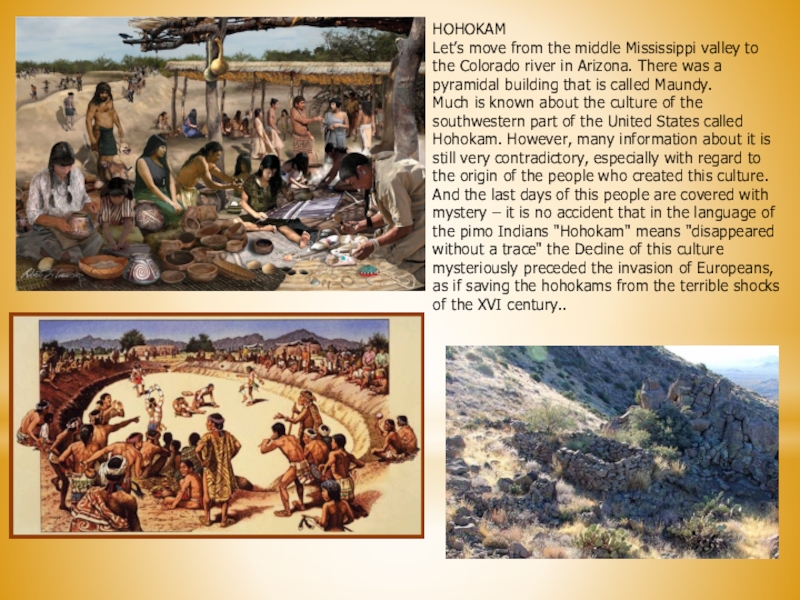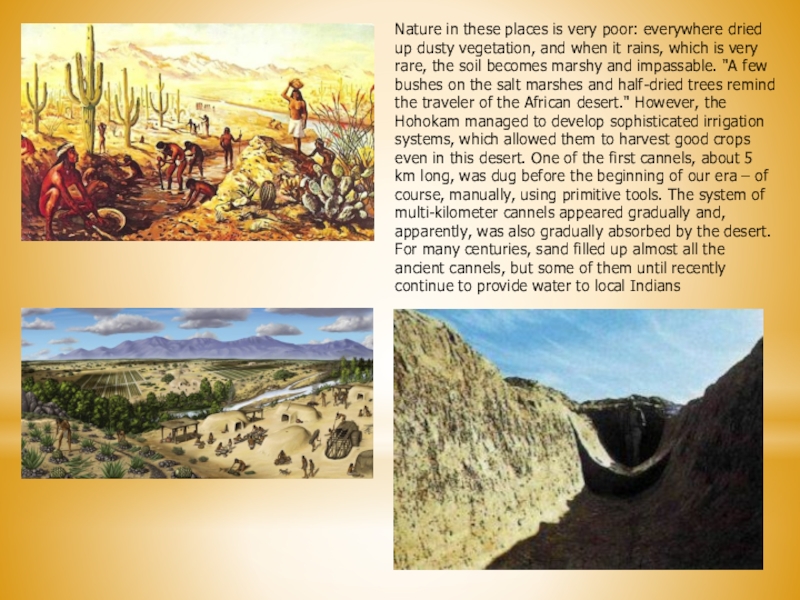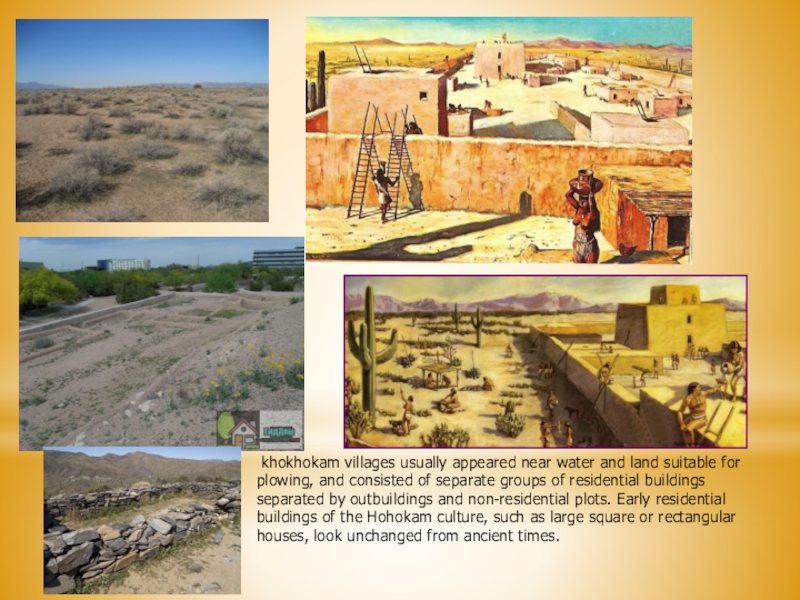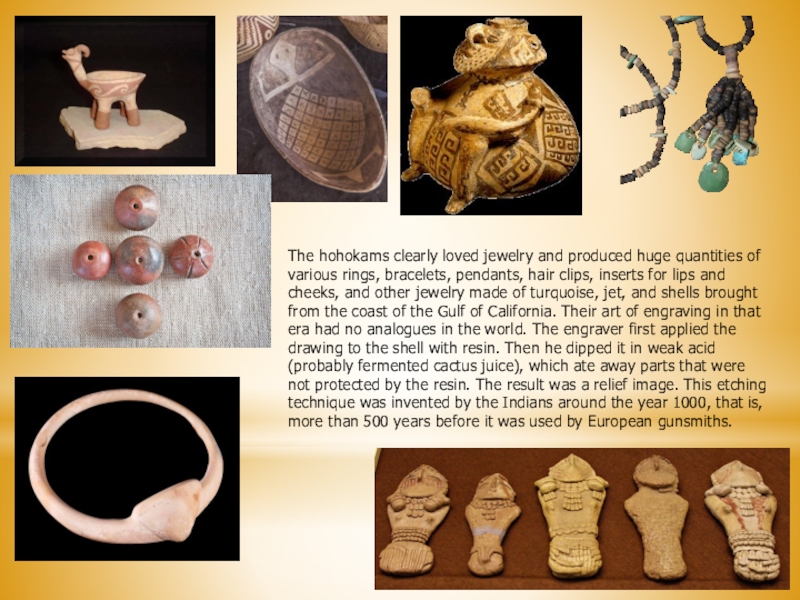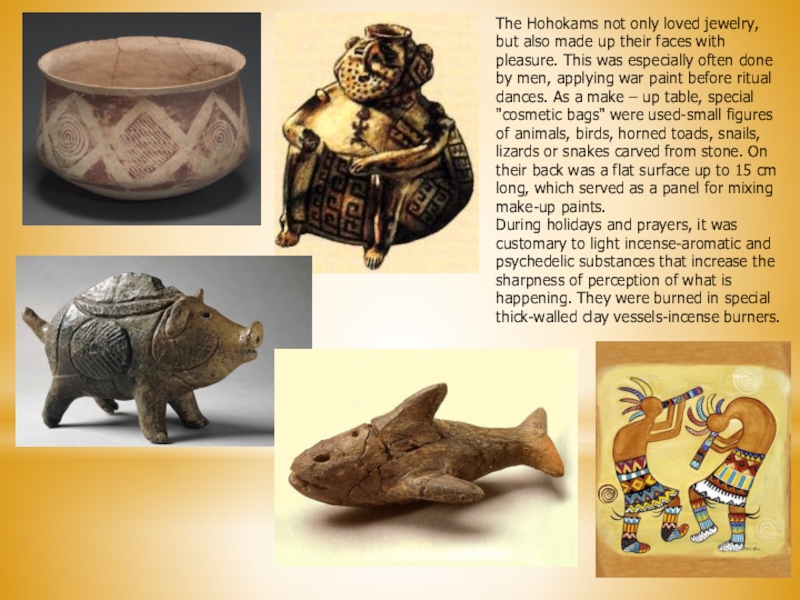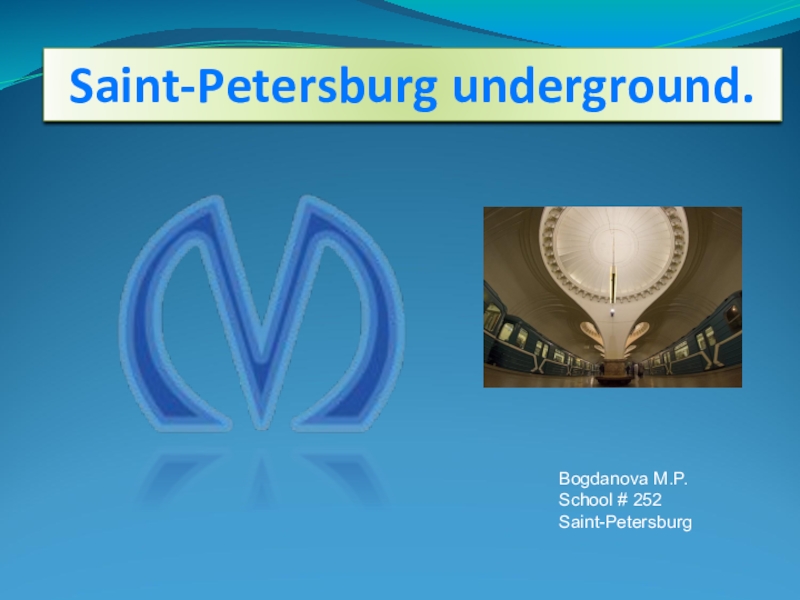- Главная
- Разное
- Образование
- Спорт
- Естествознание
- Природоведение
- Религиоведение
- Французский язык
- Черчение
- Английский язык
- Астрономия
- Алгебра
- Биология
- География
- Геометрия
- Детские презентации
- Информатика
- История
- Литература
- Математика
- Музыка
- МХК
- Немецкий язык
- ОБЖ
- Обществознание
- Окружающий мир
- Педагогика
- Русский язык
- Технология
- Физика
- Философия
- Химия
- Шаблоны, фоны, картинки для презентаций
- Экология
- Экономика
Презентация, доклад на тему Древние цивилизации презентация к уроку в 10 классе
Содержание
- 1. Древние цивилизации презентация к уроку в 10 классе
- 2. Ancient cultures and civilizations are shrouded in
- 3. Ancient Thriving American Civilizations The history of
- 4. The native American tribes that lived in
- 5. Representatives of Mississippian culture created the city
- 6. 109 mounds that have survived to our
- 7. The amazing harmony of the complex, the
- 8. The most interesting and mysterious discovery associated
- 9. Схема города построенного вокруг кургана The excavations
- 10. Some archaeological finds indicate that the Indians
- 11. Cahokia was the first truly "authentic metropolis
- 12. HOHOKAMLet’s move from the middle Mississippi valley
- 13. Nature in these places is very poor:
- 14. khokhokam villages usually appeared near water
- 15. The hohokams clearly loved jewelry and produced
- 16. The Hohokams not only loved jewelry, but
- 17. Thank You for Attention
Ancient cultures and civilizations are shrouded in a mist of mystery. At one time, they greatly surpassed the era, but for unknown reasons, they disappeared from the Earth. What is civilization? This is a stage of
Слайд 2Ancient cultures and civilizations are shrouded in a mist of mystery.
At one time, they greatly surpassed the era, but for unknown reasons, they disappeared from the Earth. What is civilization? This is a stage of development of society, social system, material and cultural achievements.
Слайд 3Ancient Thriving American Civilizations
The history of "pre-Columbian" America for the
most part have remained in oblivion. But there were dozens of ancient civilizations on the territory of America that were quite developed and flourished. They had their own unique culture and history, which was handed down from generation to generation. The remains of ancient civilizations allow us to look into their history and culture. Let's take a look at the ancient civilizations that once flourished in America.
Слайд 4The native American tribes that lived in the territory of today's
United States – namely, in the valleys of the Illinois, Ohio, and Mississippi rivers - also created a number of large communities. They were called "mound builders" because they built earthworks 20-70 feet high and several square miles in area. These buildings – natural and complex geometric shapes-served a variety of religious purposes. Its members erected a number of complex mounds, semicircular, and conical shape in the form of birds – surrounded by land embankments. All these buildings were concentrated in an ancient settlement, which was the center of trade in quartz, copper and rock crystal. on the plateau of southern Ohio, 60 miles from Cincinnati, a well-preserved example of Aden's work – "snake mound" a quarter of a mile long.
"snake mound”
Слайд 5Representatives of Mississippian culture created the city of Cahokia in Illinois
(East of present-day St. Louis. Located on the territory of the U.S. state of Illinois, the Cahokia mounds are all that remains of the Indian civilization that existed here long before the arrival of Europeans. Cahokia has long been the largest city in North America, its area was more than 15 sq. km, and the population reached 40 thousand people.
Слайд 6109 mounds that have survived to our time are part of
the ceremonial complex where various religious celebrations were held. In the center of the complex is the famous four-floored “Monks ' mound”, whose dimensions are truly grandiose-28 meters in height and 290 meters in length.
In the center of the historical site is the largest mound called the “Monks mound”. It is the largest prehistoric clay mound in North America. The mound is 1,000 feet long and 800 feet wide. The monks ' mound consists of four terraces, each of which was added at different times. Approximately 22 million cubic feet of earth was used to build this mound. Archaeologists unearthed five circular wooden devices that served The Cahokia Indians as solar calendars. These calendars, made from evenly distributed wooden logs, are called Woodhenge. The devices confirm the high level of development of The Cahokia Indians
In the center of the historical site is the largest mound called the “Monks mound”. It is the largest prehistoric clay mound in North America. The mound is 1,000 feet long and 800 feet wide. The monks ' mound consists of four terraces, each of which was added at different times. Approximately 22 million cubic feet of earth was used to build this mound. Archaeologists unearthed five circular wooden devices that served The Cahokia Indians as solar calendars. These calendars, made from evenly distributed wooden logs, are called Woodhenge. The devices confirm the high level of development of The Cahokia Indians
Слайд 7The amazing harmony of the complex, the complex structure of the
mounds and their location are evidence that this ancient Indian civilization was highly developed and prosperous.
Those who have visited Cahokia and seen the ruins of the ancient city say that this is an amazing and fascinating sight. They produced a kind of mystical power that has survived to the present day.
Cahokia has a very powerful energy, it is perfectly felt by people who do not even have a clear idea about bioenergetic fields.
According to the researchers, the inhabitants of Cahokia had extensive and fairly accurate knowledge in the field of astronomy. This is evidenced by a unique find outside the city walls — a kind of calendar built from wooden stakes. The city itself was surrounded by a fence, and behind it, not far away, was probably something like the first astronomical laboratory of the local Indians.
What is interesting is that the Central mound of the complex,, is built in such a place that on the specified four days of the year the sun rises as if exactly from it.
Those who have visited Cahokia and seen the ruins of the ancient city say that this is an amazing and fascinating sight. They produced a kind of mystical power that has survived to the present day.
Cahokia has a very powerful energy, it is perfectly felt by people who do not even have a clear idea about bioenergetic fields.
According to the researchers, the inhabitants of Cahokia had extensive and fairly accurate knowledge in the field of astronomy. This is evidenced by a unique find outside the city walls — a kind of calendar built from wooden stakes. The city itself was surrounded by a fence, and behind it, not far away, was probably something like the first astronomical laboratory of the local Indians.
What is interesting is that the Central mound of the complex,, is built in such a place that on the specified four days of the year the sun rises as if exactly from it.
Слайд 8The most interesting and mysterious discovery associated with the mounds of
Cahokia is mound 72. Here, archaeologists found the bodies of nearly 300 people, mostly young women, most likely sacrificed. There was another grave nearby where the ruler was buried. His body lay in a tomb of 20,000 seashells, the ruler's age was 40-45 years. It is believed that those who were buried next to him were sacrificed to serve him in the next life.
Слайд 9Схема города построенного вокруг кургана
The excavations prove that Cahokia was
a cultural center and home to tens of thousands of native Americans. They were active in agriculture, fishing, and trade.
Слайд 10Some archaeological finds indicate that the Indians from the banks of
the Mississippi were excellent artists, sculptors, and architects. They created ornaments made of copper and shells, decorated the walls of temples with elaborate ornaments and images of the gods, and even developed a complex system of irrigation of fields, which used the waters of the Mississippi and Illinois rivers.
in the 2000s, when paving the highway under the ruins of demolished city blocks, archaeologists found hundreds of buildings in Cahokia-barns, baths, temples and workshops where they made stone axes and knives, jewelry made of sea shells, and dishes.
in the 2000s, when paving the highway under the ruins of demolished city blocks, archaeologists found hundreds of buildings in Cahokia-barns, baths, temples and workshops where they made stone axes and knives, jewelry made of sea shells, and dishes.
Слайд 11Cahokia was the first truly "authentic metropolis of America". Between the
seventh and twelfth centuries, the settlement flourished, and its population at its peak numbered more than 40,000 people. However ,the "city of mounds" was almost suddenly abandoned by its inhabitants two centuries later. At the present time, researchers have concluded that the cause of this could be a catastrophic flood of great strength. The results of recent "field trips" show that the origin, formation and extinction of this center of Mississippian archaeological culture is associated with the "big river".
Слайд 12HOHOKAM
Let’s move from the middle Mississippi valley to the Colorado river
in Arizona. There was a pyramidal building that is called Maundy.
Much is known about the culture of the southwestern part of the United States called Hohokam. However, many information about it is still very contradictory, especially with regard to the origin of the people who created this culture. And the last days of this people are covered with mystery – it is no accident that in the language of the pimo Indians "Hohokam" means "disappeared without a trace" the Decline of this culture mysteriously preceded the invasion of Europeans, as if saving the hohokams from the terrible shocks of the XVI century..
Much is known about the culture of the southwestern part of the United States called Hohokam. However, many information about it is still very contradictory, especially with regard to the origin of the people who created this culture. And the last days of this people are covered with mystery – it is no accident that in the language of the pimo Indians "Hohokam" means "disappeared without a trace" the Decline of this culture mysteriously preceded the invasion of Europeans, as if saving the hohokams from the terrible shocks of the XVI century..
Слайд 13Nature in these places is very poor: everywhere dried up dusty
vegetation, and when it rains, which is very rare, the soil becomes marshy and impassable. "A few bushes on the salt marshes and half-dried trees remind the traveler of the African desert." However, the Hohokam managed to develop sophisticated irrigation systems, which allowed them to harvest good crops even in this desert. One of the first cannels, about 5 km long, was dug before the beginning of our era – of course, manually, using primitive tools. The system of multi-kilometer cannels appeared gradually and, apparently, was also gradually absorbed by the desert. For many centuries, sand filled up almost all the ancient cannels, but some of them until recently continue to provide water to local Indians
Слайд 14 khokhokam villages usually appeared near water and land suitable for
plowing, and consisted of separate groups of residential buildings separated by outbuildings and non-residential plots. Early residential buildings of the Hohokam culture, such as large square or rectangular houses, look unchanged from ancient times.
Слайд 15
The hohokams clearly loved jewelry and produced huge quantities of various
rings, bracelets, pendants, hair clips, inserts for lips and cheeks, and other jewelry made of turquoise, jet, and shells brought from the coast of the Gulf of California. Their art of engraving in that era had no analogues in the world. The engraver first applied the drawing to the shell with resin. Then he dipped it in weak acid (probably fermented cactus juice), which ate away parts that were not protected by the resin. The result was a relief image. This etching technique was invented by the Indians around the year 1000, that is, more than 500 years before it was used by European gunsmiths.
Слайд 16The Hohokams not only loved jewelry, but also made up their
faces with pleasure. This was especially often done by men, applying war paint before ritual dances. As a make – up table, special "cosmetic bags" were used-small figures of animals, birds, horned toads, snails, lizards or snakes carved from stone. On their back was a flat surface up to 15 cm long, which served as a panel for mixing make-up paints.
During holidays and prayers, it was customary to light incense-aromatic and psychedelic substances that increase the sharpness of perception of what is happening. They were burned in special thick-walled clay vessels-incense burners.
During holidays and prayers, it was customary to light incense-aromatic and psychedelic substances that increase the sharpness of perception of what is happening. They were burned in special thick-walled clay vessels-incense burners.
